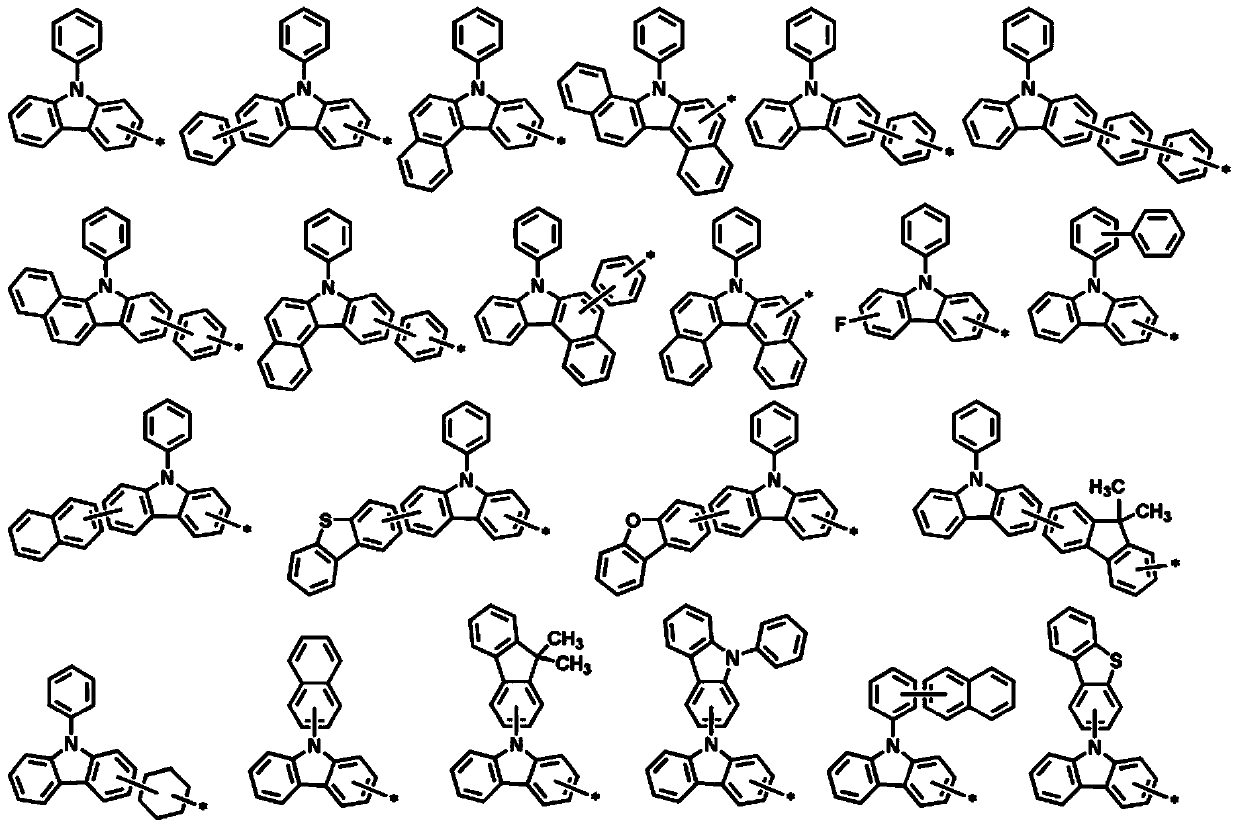Novel organic electroluminescent compounds and organic electroluminescent device using the same
A compound, electroluminescence technology, applied in electroluminescence light source, organic chemistry, electro-solid devices, etc., can solve the problem of not revealing nitrogen-containing fused bicyclic groups, short working life of organic EL devices, low glass transition temperature, etc. problems, to achieve the effect of improving current characteristics, low driving voltage, and long working life
- Summary
- Abstract
- Description
- Claims
- Application Information
AI Technical Summary
Problems solved by technology
Method used
Image
Examples
Embodiment 1
[0078] Embodiment 1: the preparation of compound C-18
[0079]
[0080] Preparation of compound 1-1
[0081] 2,4-Dichloroquinazoline (50 g, 251 mmol) and dibenzo[b,d]furan-4-ylboronic acid (53.2 g, 251 mmol) were dissolved in toluene (1 L) and purified water ( 200mL) of the mixture, to the mixture was added Pd(PPh 3 ) 4 (14.5 g, 12.5 mmol) and Na 2 CO 3 (80 g, 755 mmol). The mixture was stirred at 80°C for 20 hours. The reaction mixture was cooled to room temperature and quenched with aqueous ammonium chloride (200 ml). The reaction mixture was extracted with 1 L of ethyl acetate (EA), and the aqueous layer was further extracted with dichloromethane (1 L). The obtained organic layer was dried over anhydrous magnesium sulfate, and the organic solvent was removed under reduced pressure. The resulting solid was filtered through silica gel, and the solvent was removed under reduced pressure. The resulting solid was washed with EA (100 mL) to give compound 1-1 (50 g,...
PUM
| Property | Measurement | Unit |
|---|---|---|
| thickness | aaaaa | aaaaa |
| thickness | aaaaa | aaaaa |
| thickness | aaaaa | aaaaa |
Abstract
Description
Claims
Application Information
 Login to View More
Login to View More - R&D
- Intellectual Property
- Life Sciences
- Materials
- Tech Scout
- Unparalleled Data Quality
- Higher Quality Content
- 60% Fewer Hallucinations
Browse by: Latest US Patents, China's latest patents, Technical Efficacy Thesaurus, Application Domain, Technology Topic, Popular Technical Reports.
© 2025 PatSnap. All rights reserved.Legal|Privacy policy|Modern Slavery Act Transparency Statement|Sitemap|About US| Contact US: help@patsnap.com



